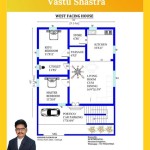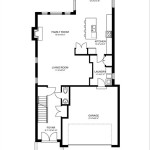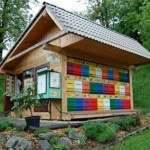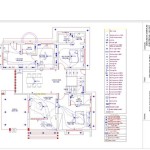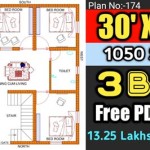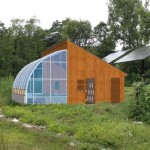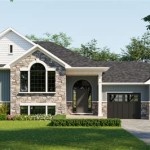Shooting House Plans for Hunting: A Comprehensive Guide
Shooting houses, also known as deer blinds or hunting stands, are enclosed structures designed to provide hunters with a safe, comfortable, and concealed position while observing and harvesting game. They offer protection from the elements, enhance visibility, and can significantly improve the overall hunting experience. Constructing a shooting house requires careful planning and execution, with the choice of plans being a critical first step. This article will delve into the various aspects of shooting house plans for hunting, providing a comprehensive guide to selecting the right design and ensuring a successful build.
The selection of appropriate shooting house plans hinges on several factors, including the type of game being hunted, the terrain, the number of occupants, and the hunter's personal preferences. Considerations such as accessibility, visibility, wind direction, and prevailing weather conditions should also be taken into account. Evaluating these factors will help narrow down the options and ensure that the chosen plan aligns with the specific needs of the hunting environment.
Key Point 1: Types of Shooting House Plans
Shooting house plans vary widely in size, shape, construction materials, and features. Understanding the different types available is crucial for making an informed decision. The following are some of the most common types of shooting house plans:
Ground Blinds: These are the simplest type of shooting house, typically constructed directly on the ground. They are often made from natural materials like branches, leaves, and brush, but can also be built using plywood, fabric, or other synthetic materials. Ground blinds offer excellent concealment and are relatively inexpensive and easy to construct. They are particularly suitable for hunting in dense cover or areas with limited visibility.
Ground blind plans often focus on creating a low profile and blending seamlessly with the surrounding environment. They might incorporate features like shooting windows with adjustable covers, comfortable seating, and ample storage space for gear.
Elevated Shooting Houses: Elevated shooting houses offer several advantages over ground blinds, including improved visibility, reduced scent dispersal, and increased safety. These structures are typically built on platforms supported by posts or legs, raising the hunter above ground level. Elevated shooting houses can be constructed from wood, metal, or a combination of materials.
Elevated plans frequently prioritize stability and structural integrity. Key considerations include the height of the platform, the size of the enclosure, and the number of supports required. Plans often include detailed instructions for constructing a sturdy ladder or staircase for safe access to the shooting house.
Tower Blinds: Tower blinds are similar to elevated shooting houses but are generally taller and more elaborate. They often feature enclosed cabins with windows on all sides, providing a 360-degree view of the surrounding area. Tower blinds are ideal for hunting in open areas or for observing game from a distance.
Tower blind blueprints emphasize maximizing visibility and comfort. They may incorporate features like insulated walls, comfortable seating, heating systems, and even sleeping quarters for extended hunting trips. Due to their size and complexity, tower blinds require more time, resources, and expertise to construct.
Portable Shooting Houses: These are designed for easy transport and setup, offering flexibility and convenience for hunters who move between different hunting locations. Portable shooting houses are typically made from lightweight materials like aluminum or canvas and can be quickly assembled and disassembled.
Portable designs usually prioritize ease of transport and assembly. They often feature collapsible frames, lightweight fabrics, and compact storage solutions. While portable shooting houses may not offer the same level of comfort and protection as permanent structures, they are a practical option for hunters who value mobility.
Key Point 2: Essential Features to Consider in Shooting House Plans
Regardless of the type of shooting house, certain features are essential for ensuring a safe, comfortable, and effective hunting experience. When reviewing shooting house plans, pay close attention to the following:
Size and Space: The size of the shooting house should be adequate to accommodate the number of occupants and their gear. Consider the amount of space needed for comfortable seating, movement, and storage. A cramped shooting house can be uncomfortable and restrict movement, potentially hindering the hunter's ability to take a shot.
Blueprints should clearly specify the dimensions of the shooting house and the interior layout. Consider the need for shelves, hooks, or other storage solutions to keep gear organized and out of the way.
Window Design: The window design is crucial for maximizing visibility and providing shooting opportunities. Shooting house plans should include details on the size, shape, and placement of windows. Adjustable windows are highly desirable, allowing hunters to control the amount of light and ventilation while minimizing scent dispersal.
Plans may offer options for different window types, such as sliding windows, flip-up windows, or gun ports. The type of window chosen should be appropriate for the type of hunting being done and the specific hunting weapon being used.
Ventilation: Proper ventilation is essential for preventing condensation and maintaining a comfortable temperature inside the shooting house. Shooting house plans should include provisions for ventilation, such as vents or small windows that can be opened and closed as needed.
Good ventilation can also help to reduce scent build-up inside the shooting house, minimizing the risk of alerting game to the hunter's presence. Consider the prevailing wind direction when planning the placement of vents.
Safety Features: Safety should be a top priority when constructing a shooting house. Plans should include details on safety features such as handrails, non-slip surfaces, and secure access points. If the shooting house is elevated, the plans should specify the type of ladder or staircase to be used and provide instructions for ensuring its stability.
Plans should also address the issue of firearm safety, including recommendations for safe gun handling practices inside the shooting house. Consider including a gun rack or other storage solution to keep firearms secure when not in use.
Accessibility: Consider the accessibility of the shooting house, particularly for hunters with mobility impairments. Plans may need to be modified to accommodate wheelchairs or other assistive devices. Ramps, wider doorways, and lower window heights can all make the shooting house more accessible.
Ensure that the access path to the shooting house is also accessible, with a smooth and level surface. Clear any obstacles that could pose a tripping hazard.
Key Point 3: Materials and Construction Considerations
The choice of materials and construction methods will significantly impact the durability, cost, and longevity of the shooting house. When selecting shooting house plans, carefully consider the following:
Wood: Wood is a popular choice for shooting house construction due to its affordability, availability, and ease of use. Pressure-treated lumber is recommended for ground contact to prevent rot and decay. Consider using exterior-grade plywood for sheathing and siding.
Plans utilizing wood should specify the type and grade of lumber to be used, as well as the appropriate fasteners for joining the various components. Pay close attention to the structural integrity of the frame and ensure that all connections are strong and secure.
Metal: Metal framing offers superior strength and durability compared to wood. Steel or aluminum can be used for the frame, with metal siding and roofing providing weather protection. Metal shooting houses are often more expensive than wood structures but can last for many years with proper maintenance.
Metal frameworks require welding or specialized fasteners for assembly. Blueprints should detail the gauge of metal to use and appropriate welding techniques. Rust-resistant coatings are essential to prevent corrosion.
Composite Materials: Composite materials, such as plastic lumber or fiber cement siding, offer a combination of durability and low maintenance. These materials are resistant to rot, insects, and weathering, making them an excellent choice for long-term use.
Composite material designs need detailed instructions on cutting, fastening, and sealing techniques specific to that material. While more expensive upfront, the reduced maintenance costs can make them a cost-effective option over time.
Construction Techniques: Regardless of the materials used, proper construction techniques are essential for ensuring the structural integrity and safety of the shooting house. Follow the plans carefully and pay attention to details such as proper bracing, secure connections, and weatherproof seals.
Consult with experienced builders or contractors if needed, particularly for complex or elevated shooting houses. Adhering to local building codes and regulations is crucial for ensuring compliance and safety. Before starting construction, obtain any necessary permits and inspections.
Camouflage and Concealment: Camouflage is essential for blending the shooting house with the surrounding environment and minimizing the risk of alerting game. Consider using natural materials like branches, leaves, and brush to cover the exterior of the shooting house.
Paint the shooting house in camouflage colors or patterns that match the natural surroundings. Avoid using bright or reflective materials that could draw attention to the structure. Ensure that the shooting house is well-concealed from all angles of approach.
Selecting the appropriate shooting house plans and carefully considering the materials and construction methods are crucial for creating a safe, comfortable, and effective hunting platform. By taking the time to thoroughly research and plan, hunters can significantly improve their hunting experience and increase their chances of success.

4x6 Shooting House Plans Howtospecialist How To Build Step By Diy

5x5 Shooting House Roof Plans Myoutdoorplans

4x6 Shooting House Plans Howtospecialist How To Build Step By Diy

5x5 Shooting House Roof Plans Myoutdoorplans Free Woodworking And Projects Diy Shed Wooden Playhouse Pe Deer Stand Blind

5x5 Shooting House Plans Myoutdoorplans

4x6 Shooting House Plans Howtospecialist How To Build Step By Diy

5x5 Shooting House Plans Myoutdoorplans

Diy Build A Portable Shooting House Mossy Oak

20 Free Diy Deer Stand Plans And Ideas Perfect For Hunting Season Blind

4x6 Shooting House Plans Howtospecialist How To Build Step By Diy

